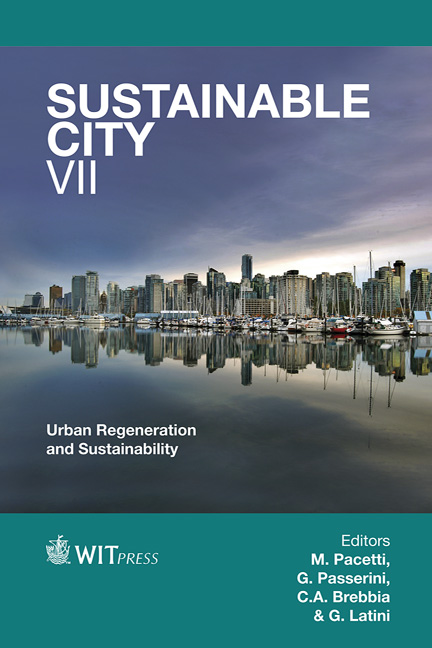Urbanizing The Deserts Of Dubai: An Outdoor Thermal Comfort Case Study Of Dubai International Academic City, UAE
Price
Free (open access)
Transaction
Volume
155
Pages
11
Page Range
85 - 95
Published
2012
Size
1,101 kb
Paper DOI
10.2495/SC120081
Copyright
WIT Press
Author(s)
D. Taleb & H. Taleb
Abstract
The urbanization of deserts in Dubai is one way in which this city can expand and explore its full potential. In this piece of research, a case study of the Dubai International Academic City was used as a basis from which to study the impact and importance of planning and orientation of projects in open unpopulated land. It demonstrates the various alternatives for project orientation relative to the sun and wind, its effects on temperature and wind readings and consequently on outdoor thermal comfort levels. ENVI-met was used to simulate various scenarios generated from the existing base case in both summer and winter. The orientation which best promoted and allowed for higher wind flow through the project was found to record the best outdoor Predicted Mean Vote levels, approaching the neutral state. The findings of this research may be used for setting up regulations regarding the planning of desert areas in Dubai on the basis of early assessment of designs. Keywords: thermal comfort, PMV, urban planning, orientation, ENVI-met, Dubai. 1 Introduction Urban outdoor spaces have implications on the people using them. Architects today strive to design outdoor corridors and urban spaces rather than having them either emerge accidentally, or as a by-product of design. Outdoor spaces must be utilised to their full potential, or else the need for such spaces may be completely eliminated and they could become disregarded as a favourable space for people to use. Outdoor spaces, or \“urban in-between spaces”, need just as much attention and thought in their design as indoor spaces. In urbanizing empty
Keywords
thermal comfort, PMV, urban planning, orientation, ENVI-met, Dubai.





